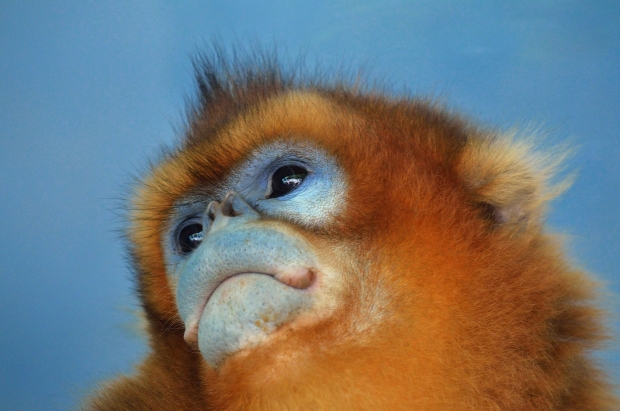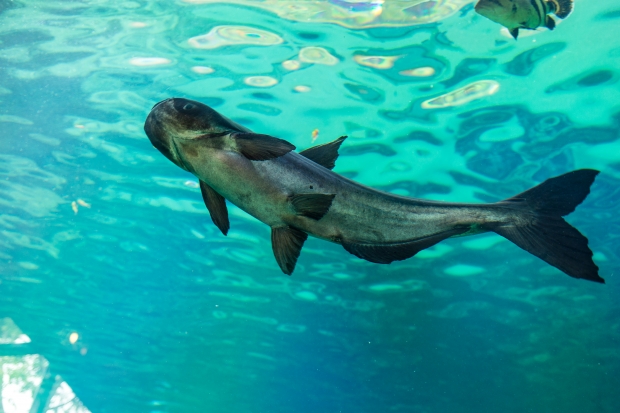Water is Life, Rivers are Home
Earlier this year, researchers discovered a new species of monkey, the white-cheeked macaque, in southern Tibet along the Nu River. The find comes amidst a time of hope, as China has just scrapped plans to build major dams on the Nu. Earlier this year, the country declared one valley a national park.
But the discovery of macaque points to a larger truth: Freshwater, and rivers in particular, hold the key to our planet’s biodiversity — and much of it has yet to be identified. Nearly all species that live on land, and the 126,000 more that live in water, depend on freshwater cycling through rivers and seas for their survival.
Why are rivers such biodiversity hotspots? Rivers can sustain such a wide variety of life because of the variation within rivers themselves. The constantly changing movement of rivers creates a lot of micro ecosystems, and rivers connect so many other ecosystems. No two rivers are the same, just as no two sections of one river are the same – each is intimately shaped by its geography and plays specific life-supporting roles in each area.
Healthy rivers are free to expand, contract, and change course slightly over seasons, years, and decades. In their unaltered states, rivers and their floodplains can convey water and sediment, filter sediment and pollutants, recharge and discharge groundwater, and act as giant sponges that absorb excess CO2 and water – all of which provide supportive habitat for diverse plant and animal species.
The species that live in and around rivers are interdependent and rely on their specific conditions. Fish that live in rapidly flowing rivers, for example, are fated to extinction in areas that become stagnant dam reservoirs.
Today, freshwaters are seeing declines in biodiversity far greater than those in any other ecosystem. Scientists say that if our current water usage trends continue, with species losses staying at current rates, our chance to conserve much of the planet’s biodiversity will disappear.
The declines result from over a century of unprecedented interventions in our watersheds. Extensive construction of dams has greatly impeded rivers’ natural pulse.
Just as industrial agriculture homogenizes swaths of land, engineered rivers the water-based equivalent of monoculture agriculture. The result is a "monoculture" of river ecosystems – choked by reservoirs and standardized flows, rivers become vulnerable to invasive species, pollution, loss of nutrients, and collapse.
In the web of life, to remove one species, or to alter one section of a river, leads to a fundamental change in the entire ecosystem. But the systems are so complex that no biologist can predict what happens when a species is removed from an ecosystem. Preserving biodiversity matters, in large part, because we don’t understand all the roles different species play in keeping our ecosystems functioning. We only see the results when it’s too late, and collapse is imminent.
Some countries are beginning to understand the value of protecting our remaining biodiversity. In recent years, scientists have flocked to the Nu River Valley to make a case for its conservation as China’s last free-flowing river. This month, they won. China, recognizing the region’s incredible value, has stopped all hydropower development on the river.
But too many countries still don’t understand what they’re losing. Nathan Lujan, a fish biologist who focuses on Latin American river, has described his life’s work as a race against time. Too often, river ecosystems are altered and destroyed at a far greater pace than any team of scientists can keep up with. Dr. Lujan records what he can about previously unknown species, and hopes that his work will serve as a record to future generations of how ecosystems function in unaltered states – a testament to the vanishing abundance, variety, and creativity of the natural world.
The good news is that every day people around the world are starting to engage directly in the efforts to document and protect freshwater biodiversity. Citizen science has been key to this work. A new study in Conservation Biology has found that citizen science is responsible for collecting the largest portion of data on species sightings.
Our partners at the Mekong Conservation Group in Thailand have also supported local people along the Mekong to conduct citizen research under the Thai Baan Research Project. The Thai Baan research collects data on over 60 different fish species present in the Mekong along the Thailand-Laos-Burma border, and also documents the different types of fishing tools and techniques that locals have used for generations.
Freshwater ecosystems nourish great biodiversity, but they face more threats than any other ecosystem. Citizen science and global movements for water protection are seeing amazing growth as freshwater gains its rightful place at the forefront of environmental concern.
With each river polluted, diverted, and engineered into a giant battery, a web of life is dismantled, and an expiration date is stamped on an entire ecosystem. With each river we protect, we keep alive a unique and beautiful place that countless species call home.






